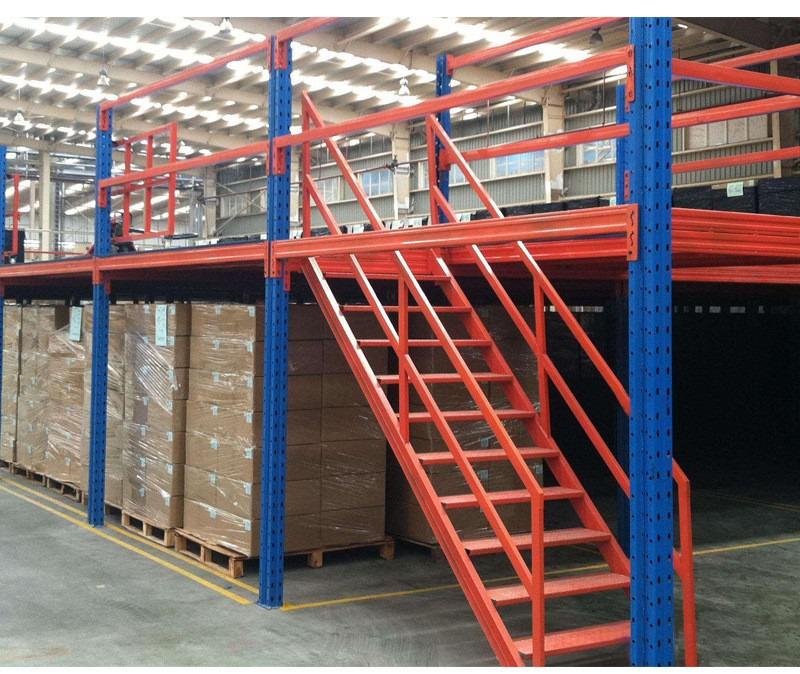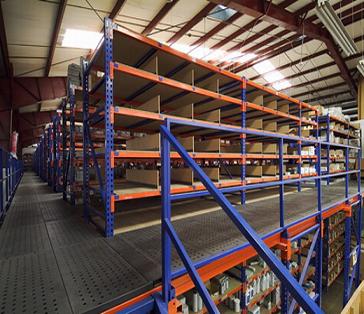In the intricate dance of modern logistics and supply chain management, racks in warehouse operations stand as the silent, indispensable backbone. Far more than simple storage structures, these engineered systems are fundamental to maximizing space utilization, streamlining workflows, ensuring inventory accessibility, and safeguarding both goods and personnel. Choosing and implementing the right racks in warehouse environments is a strategic decision impacting efficiency, safety, and ultimately, the bottom line. This comprehensive guide delves deep into the critical aspects of racks in warehouse settings, providing the insights needed to optimize your storage infrastructure.

The Fundamental Role of Racks in Warehouse Operations
Racks in warehouse facilities are not merely shelves; they are sophisticated vertical storage solutions designed to handle substantial loads, primarily palletized goods. Their core purpose is to transform vast, empty cubic footage into organized, accessible, and high-density storage zones. Without effective racks in warehouse layouts, operations descend into chaos – wasted space, inaccessible inventory, slower order fulfillment, heightened safety risks, and skyrocketing operational costs.
The benefits are profound:
Maximized Space Utilization: By building upwards, racks in warehouse designs dramatically increase storage capacity within the same building footprint. This verticality is crucial, especially in high-rent areas or constrained facilities.
Enhanced Inventory Accessibility: Well-designed racks in warehouse configurations allow for organized storage with clear aisles, enabling faster picking, replenishment, and cycle counting. The right system brings SKUs closer to the workflow.
Improved Organization & Inventory Control: Racks in warehouse systems provide designated locations, making inventory management systematic and traceable, reducing errors and loss.
Increased Operational Efficiency: Faster access translates directly to quicker order fulfillment, reduced labor costs, and higher throughput.
Goods Protection: Properly installed and loaded racks in warehouse structures keep pallets stable, off the floor (protecting against moisture and forklift damage), and segregated, minimizing product damage.
Safety Foundation: Engineered racks in warehouse systems, when used correctly, provide a stable structure, reducing the risk of collapsing loads compared to unorganized stacking.
Navigating the Maze: Common Types of Racks in Warehouse Settings
Selecting the appropriate type of racks in warehouse is paramount. Each system offers distinct advantages tailored to specific inventory profiles (SKU count, turnover rate, load characteristics) and operational needs:
Selective Pallet Rack: The undisputed workhorse. Offers direct access to every pallet location via wide aisles. Highly flexible and suitable for a vast range of SKUs with varying turnover. Ideal for distribution centers needing frequent access to many different products. Requires more aisle space compared to dense systems.
Drive-In/Drive-Through Rack: High-density champion. Forklifts drive directly into the rack structure itself, with pallets stored on rails on multiple levels deep (typically 3-7 pallets deep per side). Best for high-volume storage of homogeneous products with low SKU counts and FIFO (Drive-Thru) or LIFO (Drive-In) inventory rotation. Excellent for cold storage or bulk items. Aisle space is minimized, but accessibility to individual pallets is lower.
Pallet Flow Rack: A dynamic high-density system. Pallets are loaded on an inclined plane at the rear and flow forward on rollers or wheels to the pick face via gravity. Enforces strict FIFO rotation. Perfect for high-throughput, perishable goods, or items with expiration dates where rotation is critical. Higher initial cost but excellent space utilization and rotation control.
Push Back Rack: Another high-density option utilizing LIFO. Pallets are stored on nested carts on inclined rails, typically 2-6 pallets deep per lane. When a pallet is unloaded from the front, the next pallet automatically pushes back to the pick position. Offers better selectivity within a lane than Drive-In and good density. Suitable for medium to high turnover, multiple SKUs per lane.
Cantilever Rack: Designed for long, bulky, or irregularly shaped items that don't fit on pallet racking (e.g., lumber, piping, furniture, rolls). Features sturdy vertical columns with horizontal arms extending outwards. Arms can be adjusted vertically. Provides unobstructed access to the sides and front of stored items. Commonly used in manufacturing, construction supply, and furniture warehouses.

Choosing Wisely: Key Factors in Selecting Racks in Warehouse Projects
Selecting the optimal racks in warehouse configuration is a complex decision requiring careful analysis. Overlooking key factors can lead to inefficient operations, safety hazards, or costly reconfigurations later. Critical considerations include:
Inventory Characteristics: SKU count, pallet dimensions (length, width, height), weight per pallet, load stability (e.g., bagged goods vs. solid cases), and any special handling requirements (e.g., hazardous materials). Racks in warehouse systems must be rated for the specific loads they will bear.
Inventory Turnover (Velocity): How quickly do items move? Fast-moving SKUs benefit from easily accessible locations (like Selective), while slow-movers can be placed in denser storage (like Drive-In). ABC analysis is crucial here.
Inventory Rotation Method: Is FIFO (First-In, First-Out) or LIFO (Last-In, First-Out) required? This directly impacts the choice between systems like Flow Rack (FIFO) and Push Back (LIFO).
Building Constraints: Clear ceiling height, floor condition (flatness, load-bearing capacity), column locations, door placements, and sprinkler system layout significantly constrain racks in warehouse design possibilities. Detailed site surveys are essential.
Material Handling Equipment (MHE): The type of forklifts (counterbalance, reach truck, turret truck, order picker) and their capabilities (lift height, turning radius, fork length) dictate required aisle widths and rack configuration compatibility. Narrow-aisle (NA) or very-narrow-aisle (VNA) racks in warehouse setups require specialized MHE.
Budget: Costs vary significantly between rack types (Selective generally lowest per pallet position, Flow/Push Back higher), installation complexity, and required accessories (decking, column protectors, wire mesh, etc.). Consider both initial investment and long-term ROI through efficiency gains.
Future Growth & Flexibility: Can the system be easily reconfigured or expanded? Selective rack offers the highest flexibility. Consider potential changes in inventory profile or business volume.
Safety First: Installation, Maintenance & Best Practices for Racks in Warehouse
Racks in warehouse are engineered structures designed for specific loads, but their safety and integrity rely heavily on proper installation, diligent maintenance, and strict adherence to operational protocols. Neglecting safety around racks in warehouse can lead to catastrophic failures, injuries, fatalities, and significant financial loss.
Professional Installation: Always use certified installers following the manufacturer's specifications and engineered drawings. Ensure the floor is level and capable of bearing the loads. Improper installation is a primary cause of rack failure.
Load Capacity & Beam Deflection: NEVER exceed the stated load capacity per beam level or the overall upright frame capacity. Understand and monitor allowable beam deflection – excessive bending is a warning sign. Load plaques must be visible and accurate.
Regular Inspections: Implement a formal inspection program:
Daily/Operator Checks: Forklift operators should visually check for impacts on the rack they are working near before operation.
Weekly/Monthly Inspections: Designated personnel should systematically walk aisles looking for visible damage (dents, bends, cracks, missing/bent connectors), proper beam locking, secure anchors, and leaning frames.
Annual Professional Inspections: Engage a qualified rack inspector or structural engineer to perform a comprehensive assessment, including measuring column plumb and beam deflection. Document all inspections and repairs.
Damage Protocol: Establish a clear "Red Tag" system. Any damaged component must be immediately unloaded, the area cordoned off, and the component replaced with manufacturer-approved parts by qualified personnel. Never attempt to straighten or weld damaged components without engineering approval.
Protection Measures: Install robust column protectors (guards) at aisle ends and vulnerable points to absorb forklift impacts. Use pallet supports or wire decking where necessary to prevent pallets or products from falling. Ensure beams are properly locked into the uprights.
Proper Loading: Loads must be stable, centered on the pallet, and the pallet must be centered squarely on the beams. Avoid overhang. Ensure pallets are in good condition. Damaged pallets can collapse.
Aisle Discipline: Keep aisles clear of obstructions. Enforce speed limits for MHE. Ensure adequate lighting throughout the racking area.
Beyond the Basics: Installation, Maintenance & The Future of Racks in Warehouse
The journey doesn't end with selecting the right type of racks in warehouse.
Professional Installation is Non-Negotiable: Attempting DIY installation of racks in warehouse is extremely dangerous and invalidates engineering warranties. Certified installers ensure precise leveling, anchoring to the floor (critical for seismic zones), correct assembly according to engineered drawings, and overall structural integrity. They understand the tolerances required for safe operation.
The Critical Role of Maintenance: Racks in warehouse are subject to constant wear and tear, primarily from forklift traffic. A proactive maintenance program is vital:
Immediate Repair: Follow the strict "Red Tag" protocol for any damage.
Preventive Measures: Regularly check and tighten anchors and beam locks as part of scheduled maintenance (vibrations can loosen them over time).
Component Replacement: Use only genuine, manufacturer-approved replacement parts designed for the specific rack system. Substitutions compromise safety.
Record Keeping: Meticulously document all inspections, findings, and repairs performed on the racks in warehouse. This provides a safety history and is often required for insurance.
Hidden Costs & Considerations:
Floor Quality: Uneven or weak floors require remediation before installation, adding cost.
Permitting: Local building codes may require permits for rack installation, especially taller systems.
Lighting & Sprinklers: High-bay racks in warehouse necessitate specialized high-level lighting and potentially in-rack sprinkler systems, which add complexity and cost.
Training: Staff must be thoroughly trained on safe operating procedures around the specific racks in warehouse system, including load limits, proper placement, and damage reporting.
The Future: Integration and Automation: Racks in warehouse are increasingly becoming integrated with automation:
Automated Storage/Retrieval Systems (AS/RS): These rely heavily on specialized, ultra-dense rack structures (often resembling high-rise buildings) where cranes move within the racks to store and retrieve pallets or totes automatically.
Robotics: Mobile robots (AMRs/AGVs) and robotic palletizers/depalletizers interact with standard racks in warehouse, requiring precise positioning and potentially modified base configurations.
Warehouse Management Systems (WMS): Modern WMS software dynamically assigns locations within the racks in warehouse based on real-time demand, optimizing put-away and picking paths. The physical rack layout must support the logic of the WMS.
Advanced Materials: Research continues into lighter, stronger materials and potentially modular designs offering even greater flexibility and ease of reconfiguration for racks in warehouse.
Racks in warehouse environments are far more than static steel frameworks; they are dynamic, engineered solutions central to the efficiency, safety, and scalability of modern logistics operations. Understanding the diverse types available, meticulously evaluating selection factors, and implementing rigorous safety and maintenance protocols are not optional – they are fundamental requirements for any successful warehouse. From the ubiquitous Selective rack to the high-density marvels of Pallet Flow and Push Back systems, and the specialized support of Cantilever racking, the right choice transforms chaotic space into a streamlined, high-performing asset. As warehouses evolve towards greater automation and data-driven optimization, the role of intelligently designed and meticulously maintained racks in warehouse infrastructure will only become more critical. Investing wisely in your racking system is an investment in the very foundation of your operational success.







